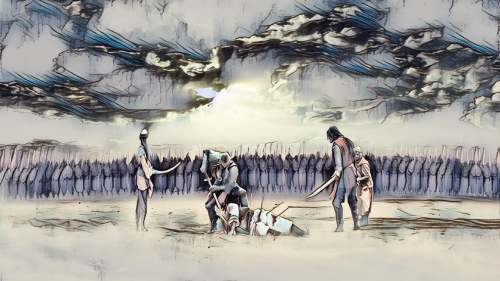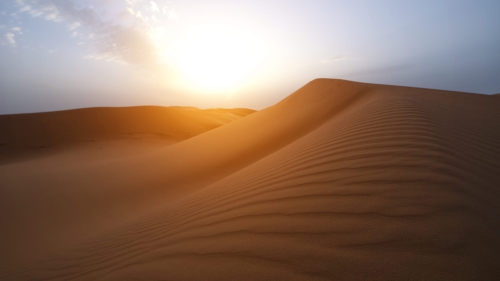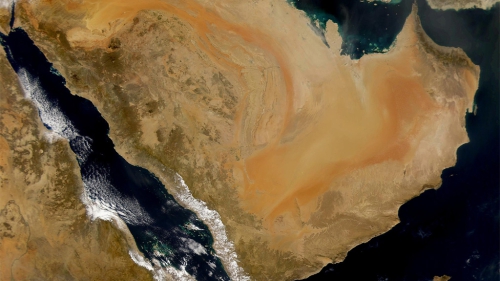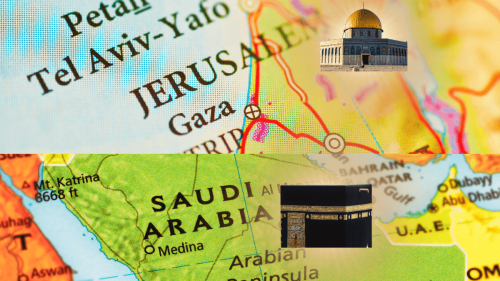Arab Navigators of the Sea

And He it is who appointed the stars to you, that you might guide yourselves by them through the darkness of land and sea.
-The Qur'an, Sura VI, verse 97.
Ahmad ibn Majid was born in Oman, probably in 1432, the year Zheng He's junks docked at Jiddah. The last of his approximately 40 known compositions, a poem on the heavens, is dated 1500, the same year Pedro Alvares Cabral discovered Brazil on his way to India by way of the Cape of Good Hope - thus linking Europe, the New World, Africa and Asia in a single voyage. Ibn Majid must have died soon after that date, his life spanning the most critical century in the history of the ocean whose currents, winds, reefs, shoals, headlands, harbors, seamarks and stars he spent a lifetime studying.
His most important work was Kitab al-Fawa'id fi Usul 'Ilm al-Bahr wa 'l-Qawa'id (Book of Useful Information on the Principles and Rules of Navigation), written in 1490. It is an encyclopedia of navigational lore: the history and basic principles of navigation, lunar mansions, rhumb lines, the difference between coastal and open-sea sailing, the locations of ports from East Africa to Indonesia, star positions, accounts of the monsoon and other seasonal winds, typhoons and other topics for professional navigators. He drew from his own experience and that of his father, also a famous navigator, and the lore of generations of Indian Ocean sailors.
The Book of Useful Information deals not only with the monsoon system, but also with the finer details of local wind regimes. The prevailing winds in the Red Sea north of Jiddah were among the most difficult, Ibn Majid writes, because they blew from the north all year round. Normal practice was to sail to Jiddah and there either transfer cargo to smaller boats, whose pilots were experienced in the local conditions between Jiddah and Suez, or to send car- goes overland. Even to Jiddah, and to 'Aydhab on the Egyptian side, access was only possible during the northeast monsoon, between October and mid-March. Other specialized knowledge was needed to sail elsewhere: south of the equator, for example, where the monsoons gave way to the trade winds. The China Sea too had its own wind regime. Only a lifetime of sailing could teach a mu'allim, or master navigator, the skills upon which the entire trading network depended.
|
Ahmad Ibn Majid on We have 32 rhumbs, and tirfa, and zam, and the measurement of stellar altitudes, but they have not. They cannot understand the way we navigate, but we can understand the way they do; we can use their system and sail in their ships. For the Indian Ocean is connected to the All-Encompassing Ocean, and we possess scientific books that give stellar altitudes, but they do not have a knowledge of stellar altitudes; they have no science and no books, only the compass and dead reckoning.... We can easily sail in their ships and upon their sea, so they have great respect for us and look up to us. They admit we have a better knowledge of the sea and navigation and the wisdom of the stars." |
By Ibn Majid's time, four major innovations - two of them from China - had improved ship design and navigation.
Around the year 1000, the Chinese developed the axial stern-post rudder. It replaced the long "steering oar," which was always awkward to handle and prone to snap in heavy seas. The hinged rudder with its tiller made sailing easier and safer, especially in bad weather. It was not until the 13th century, however, that it reached the Mediterranean, probably about the same time as the compass, or a little later.
From the Arabian tradition of seafaring came the lateen sail, which had long allowed Arab dhows and other ships to sail closer to the wind than their Mediterranean counterparts. By the mid-15th century, however, the Portuguese and Spanish had combined it with their own square-rigged tradition, and it proved essential to their successes in both Asia and the New World.
Navigation relied on the third and fourth innovations - "fingers" and the kamal, and the early compass - for fixing a position at sea and setting a course out of sight of land. Ahmad ibn Majid and his fellow navigators used the Pole Star, determining latitude by its height above the horizon. By keeping the Pole Star at the same height, one could sail east and west on the same latitude; that height could be measured by the number of arm's-length finger-widths between the horizon and the star. Cambay, for example, lay at a latitude at which the Pole Star lay 11 fingers' width above the horizon. (This method was more precise than it might seem: Each "finger" was divided into eight parts.)
Another method of measuring the Pole Star's height above the horizon was by using the kamal. The kamal was a small rectangle of wood attached to a cord which was calibrated by knots along its length. Each knot represented the latitude of a particular port. The navigator held the cord in his teeth at a certain knot and held the kamal at eye level at the cord's full length, aligning the lower edge of the rectangular plaque with the horizon. When the upper edge intersected the Pole Star, the ship was on the latitude of the desired port. Distance east and west was measured by time, not in hours but in zam, three-hour increments - the length of a watch on board - measured by the burning of a standardized stick of incense.
Portuguese navigators, on the other hand, found latitude by measuring the altitude of the sun, rather than the Pole Star, and estimated their easting and westing by dead reckoning. Under King Manuel, tables of the sun's declination were compiled for mariners, based on similar tables prepared by Arab scholars in the mid-13th century. When the first European printed work on navigation appeared in 1509, it contained a method of "raising the Pole Star" that almost certainly came from Indian Ocean navigators, for the East-West dialogue on this subject had begun almost immediately: In 1499, Vasco da Gama's pilot had a long conversation on navigation with the Gujarati pilot who led the Portuguese to Calicut. Similarly, the earliest European maps of the Indian Ocean give the position of ports in pulgadas - "fingers" - and the Chinese used this method as well.
The development of the compass derived from knowledge of the properties of the lodestone, whose ability to attract iron had been known since remote antiquity. The late Joseph Needham showed how Chinese diviners in the second century B.C. cast lodestone spoons to align north-south. From this came the invention of the magnetized needle, which Ibn Majid attributed to the mythological patron of Indian Ocean sailors, al-Khidr, who, according to legend, had guided Alexander the Great over land and sea.
The compass proper is also a Chinese invention. The earliest known mention of it occurs in 990, and a Chinese encyclopedia of 1135 describes one in the shape of a wooden fish with a piece of magnetite inside that was floated in a bowl. In 1242 an Arabic text describes a compass seen on a voyage from Syria to Alexandria that was in the shape of a hollow iron fish that similarly floated on water in a bowl.
Toward the end of the 13th century someone - probably an Italian - fixed the magnetized needle to a wind rose. This created the basic form of the compass we know today. Traditionally, the Mediterranean wind rose had 16 parts, but with the compass this developed into a 32-part rose, allowing, for the first time, very precise courses to be laid. It also made it possible to draw up the accurate marine charts known as portulans.
An indication of the esteem in which Ahmad ibn Majid was held in his day is that Arab tradition actually ascribes the invention of the compass to him. What he may in fact have done is introduce the housed standing compass affixed to its card.
So by Ahmad ibn Majid's time, technology and economic expansion joined to mark a definitive break with the era before the compass and the axial rudder. Times were changing in other ways too. The foundation of Malacca, the Chinese voyages and the rapid growth of Islamic powers in northern India, Indonesia and the Philippines were all creating new poles of attraction in the East. Small Islamic principalities were springing up in Malaya, Java and Sumatra, and their only links to the Islamic heartland were by sea. Islamic space was expanding eastward, and with it the frontiers of the Islamic economy. Ahmad ibn Majid's publication of the secrets of Indian Ocean navigation can be seen as one response to this expansion.
Source: Saudi Aramco World.

















